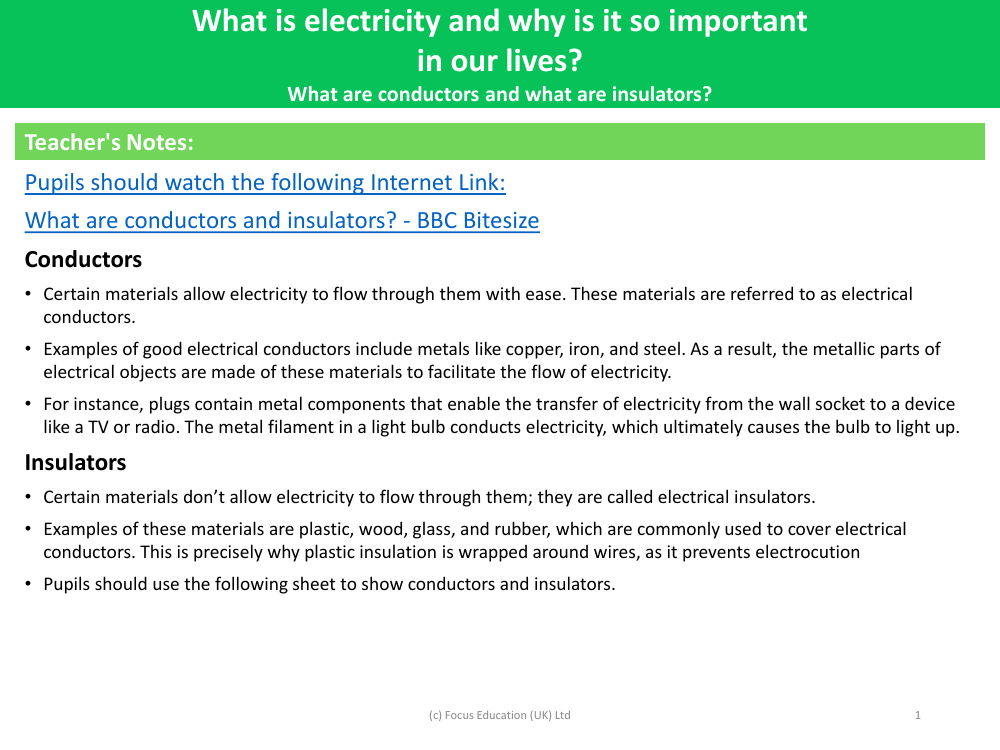What are conductors and what are insulators? - Teacher notes

Science Resource Description
Conductors and insulators are two categories of materials that differ in their ability to allow electricity to pass through them. Conductors are materials that permit electricity to flow freely. They are essential in the creation of electrical circuits and devices. Common conductors include metals such as copper, iron, and steel, which are chosen for their excellent conductivity. These materials are used in various electrical components; for instance, the metal parts of a plug facilitate the transfer of electricity from a socket to an appliance, and the metallic filament within a light bulb carries electrical current that illuminates the bulb.
On the other hand, insulators are materials that resist the flow of electricity, effectively blocking the passage of electrical current. Insulators are crucial for safety in electrical systems, as they prevent unwanted electrical conduction. Typical insulating materials include plastic, wood, glass, and rubber. These are often used to coat or encase electrical wires and components, providing a protective barrier that helps to prevent electric shocks and short circuits. For educational purposes, pupils can use a worksheet to categorize different materials as conductors or insulators, enhancing their understanding of these properties in practical applications.



